Watership Down, Richard Adams' first novel, made its way into my life in the Christmas of 1974 and has drawn me back to its yellowing pages ever since. A present from a much loved uncle, the story of the quest for survival by a brave, easy to love band of rabbits, seemed to combine the intimacy of a myth with the scale of a battle. For me it continues to hold the lure and the comfort of a pilgrimage to be made and remade.
"The primroses were over:" the seasonal melancholy of the first line runs as a thread through the text, its sad beauty drawing us in. From the beginning, the fact of seeing of the world and the initial surroundings of Sandleford Warren through the eyes of the rabbits is something which, as readers, we don't question. So immersed are we in their vantage point that the appearance in the closing chapters of a human in the shape of Lucy, the farm girl at Nuthanger, comes as something of a reversal. Adams has sometimes been said to have "anthropomorphised" the rabbits but it always seemed to me that their charm was rather that we become them.
The words on a new noticeboard fill the sensitive seer rabbit, Fiver, with a sense of "some terrible thing – coming closer and closer", threatening their beloved Sandleford: "the field's full of blood". Fiver's warning is ignored by the chief rabbit, forcing a small brave group – of those convinced that the warren's days are numbered – to leave, in search of a new home. Thus begins the journey at the novel's heart.
There is a fragility as well as strength about the little group that sets forth. Fiver is accompanied by his brother, Hazel, who is himself elevated to a new and unanticipated position as leader. New tests face them. Complementing Hazel's loyalty and wish to see the best in others, Bigwig brings physical strength and courage, and we find ingenuity in Blackberry. The mix plays a huge part in the book's charm.
While the shape of each character is filled out as the journey advances, the presence in the party of Silver and Bigwig, physically the strongest of the group, and formerly of the Owsla, military element of the warren, consolidates a sense of the battle to come.
In the way of all pilgrimage, their journey (reflected in quotations from Bunyan and in a physical map in the back of the book) presents dangers and hurdles on its way. Fiver's vision is of safety at Watership Down, but the rabbits' first arrival there brings only the realisation that a warren without does cannot survive. A group of emissaries must venture to the nearby warren, Efrafa, known to house many does – and over which the tyrannical figure of the antagonist, General Woundwort, looms. In tandem, Hazel and Pipkin lead a raid on a nearby farm, learning only then of their fellow rabbits' escape from Efrafa (seemingly a police state), having fought for their lives.
Against these ongoing struggles, Adams provides humour and the magic of storytelling within the story. From Dandelion we hear tales known to all rabbits and told "on winter nights when the cold draught moved down the warren passages". Tales of of Frith, a god-figure, and his bestowal to the legendary rabbit hero, El-ahrairah, of the safety of all rabbits – now and in future generations. Such are the glimpses of hope to which we cleave, when news reaches the group of the destruction of Sandleford and their sense of exile seems complete on the worst of Fiver's visions coming to pass.
When the labours of Hazel and his band risk taking too much out of us, humour comes in the shape of Keehar, a strangely accented black-haired gull they encounter, wounded, along the way. Characterised by an "outlandish and distorted)" accent (inspired by a fighter Adams met in the Norwegian Resistance) and serving as a part of the rescue of the rabbits, he brings levity and friendship.
The novel has its own fictional language, Lapine, invented by Adams but somehow easy to accept as one we have always known. It is the language of the countryside, of its copses and beeches and of the weather that read as a kind of rapture to my eight-year-old mind: "Creatures that have neither clocks nor books are alive to all manner of knowledge about time and the weather ... The changes in the warmth and the dampness of the soil, the falling of the sunlight patches, the altering movement of the beams in the light wind."
The poetry of the rabbits' silflay, their gathering at the surface to feed, on summer evenings, "in the grass under the red may and the sweet, carrion-scented elder bloom" speaks to something perennial. The symbolism, mythology and meaning of the individual rabbits' names remain with the reader a long time after the last sentence is read.
Adams dedicated Watership Down to his daughters Juliet and Rosamond, and always underplayed any claim to an intended allegory, saying: "I simply wrote down a story I told to my two little girls." On my first acquaintance with it, something that carried them on their journeys held, for me, a mythical nostalgia for a world I didn't know I was missing. Its comfort lies not in all ending well but in the courage, loyalty, language and truth of the the journey. It's a journey I know I will make again.
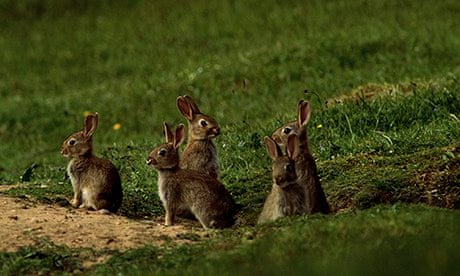
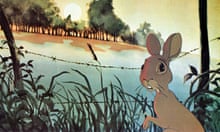




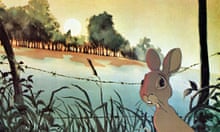
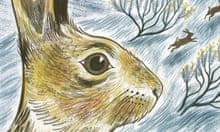
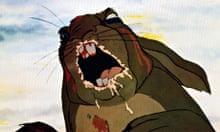
Comments (…)
Sign in or create your Guardian account to join the discussion